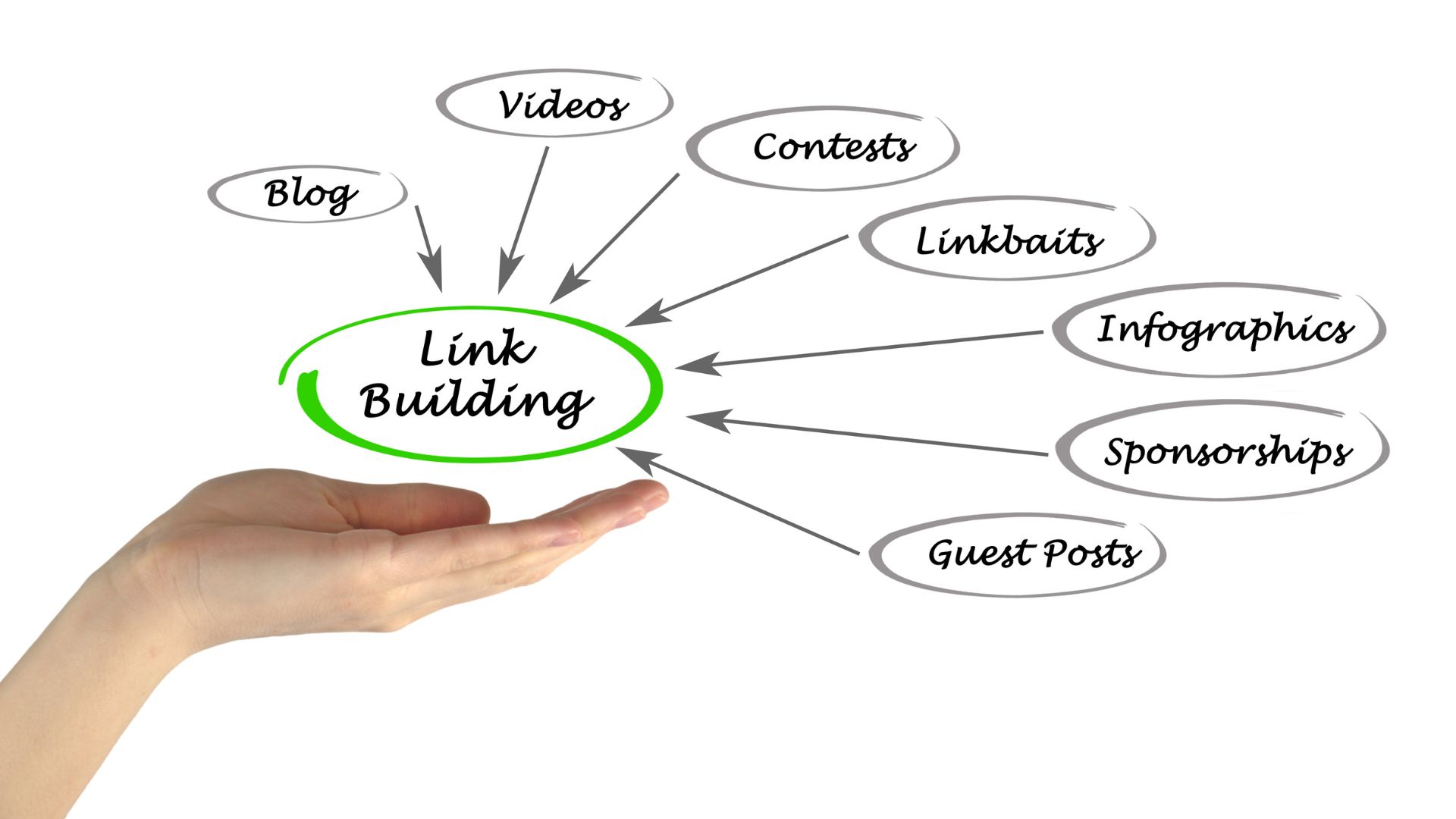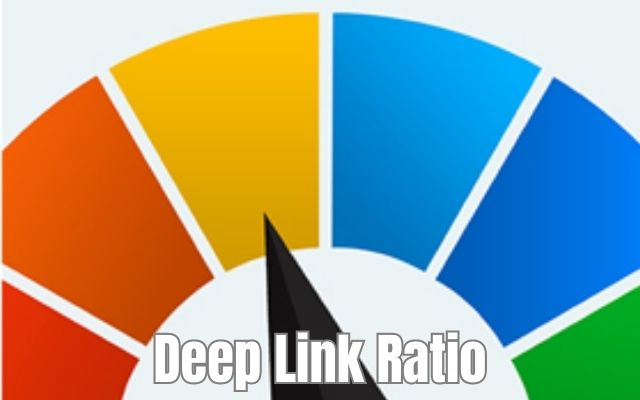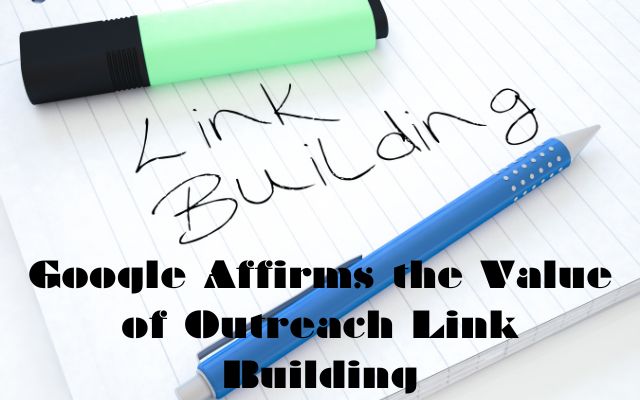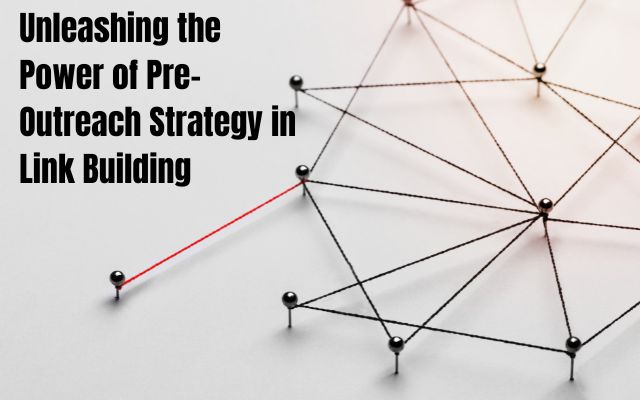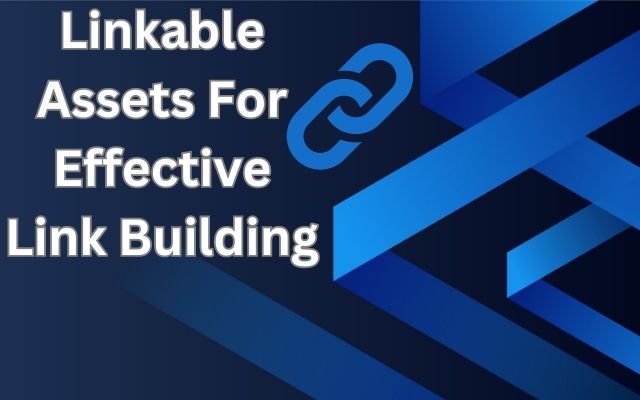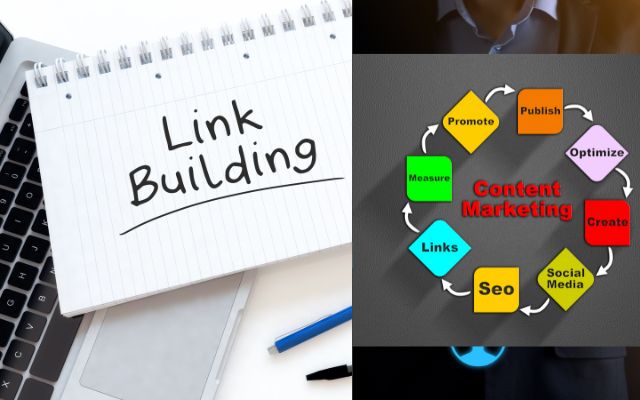Rebuilding the Chain: An In-Depth Guide to Broken Link Building for Improved SEO
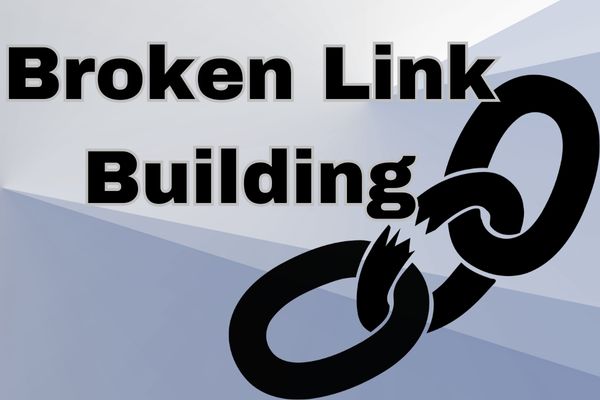
Rebuilding the Chain: An In-Depth Guide to Broken Link Building for Improved SEO offers comprehensive insights and strategies to enhance search engine optimization through the effective practice of broken link building. In the world of search engine optimization (SEO), broken link building is an effective technique that can improve your website’s ranking and increase organic traffic.
Broken links (also known as dead links) are links on webpage that no longer work because the page they link to has been deleted or moved. These broken links can negatively impact user experience and can affect your website’s SEO ranking. Broken link building involves identifying these broken links on external websites and replacing them with relevant and useful content from your website.
What is Broken Link Building?
Broken link building is a proactive SEO strategy that involves identifying broken or dead links on external websites and replacing them with active links to your own content. It is a mutually beneficial approach that helps website owners fix broken links while providing you with an opportunity to secure valuable backlinks.
Definition of Broken Links
Broken links, also known as dead links or link rot, are hyperlinks that lead to web pages or resources that no longer exist. These broken links often result from changes in website URLs, content removal, or server errors. When users click on a broken link, they are directed to an error page, resulting in a poor user experience.
Understanding the Importance of Broken Link Building
Broken link building is important for several reasons. Firstly, broken links negatively impact user experience and can lead to higher bounce rates, reduced time on site, and lower overall user satisfaction. Secondly, broken links prevent search engine crawlers from efficiently indexing and ranking web pages, potentially affecting your website’s organic visibility.
How Broken Link Building Works
The broken link building process typically involves the following steps:
Identify relevant websites:
Identify authoritative websites in your niche or industry that have broken links. This can be done through various methods, such as using link analysis tools, conducting competitor analysis, or manually checking for broken links on relevant websites.
Create link-worthy content:
Develop high-quality, informative content on your own website that can serve as a valuable replacement for the broken link. This content should be relevant to the page where the broken link was found and offer additional value to users.
Outreach to webmasters:
Contact the webmasters or website owners of the sites containing the broken links. Inform them about the broken links on their website and offer your own content as a replacement. Craft personalized outreach emails that highlight the value of your content and explain how it can benefit their website and audience.
Build relationships:
Building relationships with webmasters is crucial for successful broken link building. Engage in genuine conversations, provide assistance, and demonstrate your expertise in your niche. This helps establish trust and increases the likelihood of receiving backlinks.
Monitor and maintain active links:
Once your replacement links are accepted, regularly monitor them to ensure they remain active. If any of your links become broken over time, reach out to the webmasters again and offer an updated replacement.
By following these steps, you can effectively leverage broken link building to enhance your website’s SEO, attract targeted traffic, and strengthen your online presence.
Benefits of Broken Link Building
Enhancing SEO Rankings
One of the primary benefits of broken link building is its positive impact on SEO rankings. By replacing broken links with active links to your own content, you can increase the number of high-quality backlinks pointing to your website. Backlinks are a key ranking factor in search engine algorithms, and acquiring relevant and authoritative backlinks can significantly improve your website’s visibility in search engine results pages (SERPs).
Increasing Website Traffic
Broken link building can drive targeted traffic to your website. When you replace a broken link with a link to your own content, you provide a valuable resource to users who would have otherwise encountered an error page. This encourages users to click on your link, leading them directly to your website. As a result, you can attract interested visitors who are more likely to engage with your content, explore your website, and potentially convert into customers or subscribers.
Building Relationships with Webmasters
Successful broken link building involves reaching out to webmasters and building relationships with them. When you inform webmasters about broken links on their websites and offer helpful replacements, you demonstrate your willingness to assist and add value. This engagement can lead to positive relationships with webmasters, who may be more inclined to collaborate with you in the future, share your content, or provide additional backlink opportunities.
Expanding Brand
Awareness Broken link building can contribute to expanding your brand’s awareness and recognition. When webmasters and their audiences discover your valuable replacement content, they become exposed to your brand, products, or services. This exposure can generate brand awareness and increase your brand’s visibility within your target market. Furthermore, if your content is valuable and relevant, users may share it on social media platforms, further amplifying your brand reach and attracting new audiences.
By leveraging broken link building, you can simultaneously enhance your SEO rankings, drive targeted traffic to your website, build relationships with influential webmasters, and expand your brand’s awareness. These benefits work together to improve your online presence, increase your website’s authority, and ultimately contribute to your overall digital marketing success.
Step by step guide on Broken links
Step 1: Identifying Relevant Websites and Broken Links
The first step in broken link building is to identify relevant websites and locate broken links within them. There are several methods you can use:
a) Conducting manual checks: Visit websites within your niche or industry and manually search for broken links. Look for pages with outdated or irrelevant resources, error pages, or broken image links.
b) Utilizing link analysis tools: Use tools like Ahrefs, Moz, or SEMrush to analyze backlinks pointing to your competitors’ websites. These tools can help you identify broken links and explore potential opportunities for replacement.
c) Monitoring Google Search Console: Google Search Console provides information about broken links that are affecting your own website. By addressing these internal broken links, you can improve user experience and avoid negative impacts on SEO.
Step 2: Creating Link-Worthy Content
To successfully replace broken links, you need to create high-quality, link-worthy content that adds value to the webmasters and their audience. Consider the following tips:
a) Research target audience: Understand the needs and interests of your target audience. This will help you create content that aligns with their preferences and provides solutions to their problems.
b) Develop comprehensive resources: Create content that is informative, well-researched, and comprehensive. This could be in the form of guides, tutorials, case studies, infographics, or tools that provide valuable insights and information.
c) Optimize content for SEO: Ensure that your content is optimized for search engines. Use relevant keywords, optimize meta tags, headers, and include internal links to other pages on your website.
Step 3: Analyzing Competitor Backlinks
Analyzing your competitors’ backlinks can reveal broken link opportunities that you can target. Follow these steps:
a) Identify competitors: Identify your main competitors in the industry or niche you operate in.
b) Use backlink analysis tools: Utilize backlink analysis tools like Ahrefs, Majestic, or Moz to explore your competitors’ backlink profiles. Look for broken links pointing to their websites.
c) Evaluate link prospects: Analyze the quality and relevance of the websites where broken links exist. Identify those that are relevant to your content and have high domain authority.
Step 4: Outreach and Contacting Webmasters
Once you have identified broken links and created link-worthy content, it’s time to reach out to webmasters. Here’s how to approach outreach:
a) Craft personalized emails: Create customized outreach emails addressing the webmasters by name and explaining why your content is valuable as a replacement for the broken link. Personalize the email and show genuine interest in their website.
b) Highlight the benefits: Clearly communicate the benefits of your content, such as its relevance, quality, and the value it brings to their audience.
c) Offer assistance: Demonstrate your willingness to assist webmasters by offering support in fixing the broken link issue and providing a seamless replacement.
Step 5: Following Up and Building Relationships
Building relationships with webmasters is crucial for successful broken link building. Follow these practices:
a) Follow up: Send follow-up emails to webmasters who haven’t responded to your initial outreach. Be polite, remind them of your previous email, and emphasize the value of your content.
b) Provide additional value: Share additional resources or insights related to their website’s niche or industry. Offer assistance beyond broken link building to establish a rapport.
c) Engage on social media: Connect with webmasters on social media platforms. Share and engage with their content, comment on their posts, and develop a relationship outside of broken link building.
Step 6: Monitoring and Reporting
After securing replacement backlinks, it’s essential to monitor and report on the progress of your broken link building campaign. This step helps you track the effectiveness of your efforts and make adjustments as needed. Here’s what you should do:
a) Monitor active links: Regularly check the status of the replacement links you obtained. Ensure they remain active and functional. You can use tools like Ahrefs or Google Search Console to monitor the status of your backlinks.
b) Track traffic and engagement: Analyze the traffic and engagement metrics of the pages where your replacement links are placed. Monitor the increase in website visits, time spent on page, and other relevant metrics. This data will help you evaluate the impact of your broken link building campaign on website traffic.
c) Measure SEO impact: Monitor the changes in your website’s search engine rankings and organic visibility. Keep an eye on the performance of keywords associated with the pages where your replacement links are located. This will help you assess the SEO impact of your broken link building efforts.
d) Generate reports: Create regular reports to document the progress and results of your broken link building campaign. Include information such as the number of broken links identified, replacement links secured, traffic improvements, and any notable SEO ranking changes. Use this data to refine your strategy and inform future broken link building initiatives.
e) Adapt and iterate: Based on the insights gained from monitoring and reporting, make adjustments to your broken link building approach. Identify areas where you can improve outreach, content creation, or relationship building. Continuously refine your strategy to maximize the effectiveness of your future campaigns.
By diligently monitoring and reporting on your broken link building campaign, you can measure its impact, identify areas for improvement, and ensure that you are achieving your desired SEO and traffic goals. Regular analysis and adaptation will help you optimize your efforts and maximize the benefits of broken link building.
Effective Outreach Strategies
Crafting Engaging Outreach Emails
When reaching out to webmasters, it’s crucial to craft engaging outreach emails that grab their attention. Consider the following tips:
- Use a compelling subject line: Create a subject line that piques the recipient’s interest and encourages them to open the email.
- Start with a personalized greeting: Address the recipient by their name to show that you’ve done your research and are genuinely reaching out to them.
- Clearly state the purpose: Clearly explain why you’re contacting them and how your content can add value to their website or audience.
- Be concise and compelling: Keep your email concise and to the point. Highlight the benefits of your content and why it’s worth their consideration.
- Include a call to action: Provide a clear call to action, such as requesting their feedback, suggesting a collaboration, or asking for their thoughts on the broken link issue.
Personalization and Customization
Personalization is key to successful outreach. Tailor your emails to each recipient by referencing specific details about their website or content. This demonstrates that you’ve taken the time to understand their needs and establishes a connection. Avoid generic templates and strive for a personalized approach in your outreach efforts.
Leveraging Social Media and Networking
In addition to email outreach, leverage social media and networking platforms to connect with webmasters. Follow them on platforms like Twitter or LinkedIn, engage with their content, and build relationships. This can help establish familiarity and increase the chances of a positive response to your outreach efforts.
Establishing Credibility and Trust
Establishing credibility and trust is crucial when reaching out to webmasters. Here’s how you can do it:
- Showcase your expertise: Highlight your experience, credentials, or any relevant achievements to establish yourself as a credible source in your niche.
- Provide evidence: Include links to your own high-quality content, guest posts, or case studies to demonstrate your expertise and the value you can bring.
- Offer testimonials: If applicable, share testimonials or reviews from satisfied clients or industry experts to build trust and credibility.
Setting Realistic Expectations
Set realistic expectations when reaching out to webmasters. Understand that not every outreach effort will result in a positive response or a backlink. Be prepared for rejections or non-responses and maintain a positive mindset. It’s a numbers game, and persistence is key in broken link building.
Best Practices for Successful Broken Link Building
Conducting Regular Link Audits
Regularly audit your own website’s links to identify any broken links that may exist. Use tools like Google Search Console, Ahrefs, or Broken Link Checker to detect and fix internal broken links. By maintaining a healthy and error-free website, you enhance user experience and demonstrate professionalism to other webmasters.
Creating High-Quality Linkable Assets
Invest in creating high-quality, linkable assets that are valuable to webmasters and their audiences. Develop content such as comprehensive guides, research studies, interactive tools, or visually appealing infographics that offer unique insights or solutions. The more valuable and link-worthy your content is, the higher the chances of attracting backlinks.
Targeting Relevant and Authoritative Websites
Focus on targeting relevant and authoritative websites within your industry or niche. Seek out websites that align with your content and have a strong online presence. Backlinks from reputable and relevant websites carry more weight and have a greater impact on your SEO efforts.
Monitoring and Maintaining Active
Links After securing replacement links, regularly monitor them to ensure they remain active and functional. Use tools like Ahrefs, SEMrush, or Google Search Console to check the status of your backlinks. If any of your links become broken over time, reach out to the webmasters and offer updated replacements.
Tracking Progress and Analyzing Results
Track the progress and analyze the results of your broken link building campaign. Monitor metrics such as the number of broken links identified, replacement links secured, website traffic, keyword rankings, and engagement metrics. Use tools like Google Analytics, Ahrefs, or Moz to gather data and evaluate the impact of your efforts. Analyzing the results will help you identify areas of success and areas that require improvement, allowing you to refine your strategy for future campaigns.
Overcoming Common Challenges
Dealing with Rejections and Non-Responses
Rejections and non-responses are a common part of broken link building. Don’t be discouraged by them. Instead, focus on learning from each outreach attempt. Analyze the reasons for rejections or non-responses and refine your approach accordingly. Persistence and adaptability are key to overcoming these challenges.
Managing Time and Resources
Broken link building can be time-consuming, especially when conducting outreach and building relationships with webmasters. To manage your time and resources effectively, consider the following strategies:
- Prioritize websites with high domain authority and relevance.
- Use outreach and relationship management tools to streamline and automate the process.
- Set realistic goals and allocate dedicated time for broken link building activities.
- Consider outsourcing certain tasks, such as email outreach, to specialized professionals or agencies.
Ensuring Relevance and Contextual Fit
When reaching out to webmasters, ensure that your content is highly relevant and fits within the context of their website. Tailor your content suggestions to align with their audience’s interests and needs. This increases the likelihood of them considering your replacement link as a valuable resource.
Adapting to Algorithmic Changes
Search engine algorithms are constantly evolving, and it’s essential to adapt your broken link building strategies accordingly. Stay updated with algorithmic changes and industry trends. This will help you make informed decisions, adjust your approach, and ensure that your broken link building efforts remain effective in the ever-changing SEO landscape.
Tools and Resources for Broken Link Building
Link Crawling and Broken Link Identification Tools
- Ahrefs Site Explorer
- Moz Link Explorer
- SEMrush Backlink Audit Tool
- Screaming Frog SEO Spider
- Google Search Console
Outreach and Relationship Management Tools
- Mailshake
- Pitchbox
- BuzzStream
- Ninja Outreach
- Outreach.io
SEO Analysis and Tracking Tools
- Google Analytics
- Ahrefs
- Moz Pro
- SEMrush
- SERPWatcher
Utilize these tools to streamline your broken link building workflow, automate tasks, and gather insights that will help you optimize your campaign and achieve better results.
By following these effective outreach strategies, implementing best practices, overcoming common challenges, and utilizing the right tools and resources, you can enhance your broken link building efforts and improve your website’s SEO rankings, traffic, and overall online visibility.
Read More:
- Building Stronger Connections: A Comprehensive Guide to Resource Link Building Strategies
- Unlocking the Power of Guest Blogging: Strategies and Tips for Building Your Online Presence
- The Art of Link Building: Strategies and Techniques for Success
- Reaching New Heights: A Comprehensive Guide to the Skyscraper Technique in Link Building
- Social Signals for Link Building: How to Harness the Power of Social Media for SEO Success
- Unlocking Lost Opportunities: A Guide to Link Reclamation for Boosting Your Online Presence
To summarise,
Broken link building is an effective SEO strategy that allows you to turn broken links into valuable opportunities for your website. By following the step-by-step guide outlined in this article, you can harness the power of broken link building to improve your website’s visibility, enhance your search engine rankings, and drive targeted traffic to your content. Remember to adopt best practices, invest in relationship building, and consistently monitor and maintain your active links to ensure long-term success.


